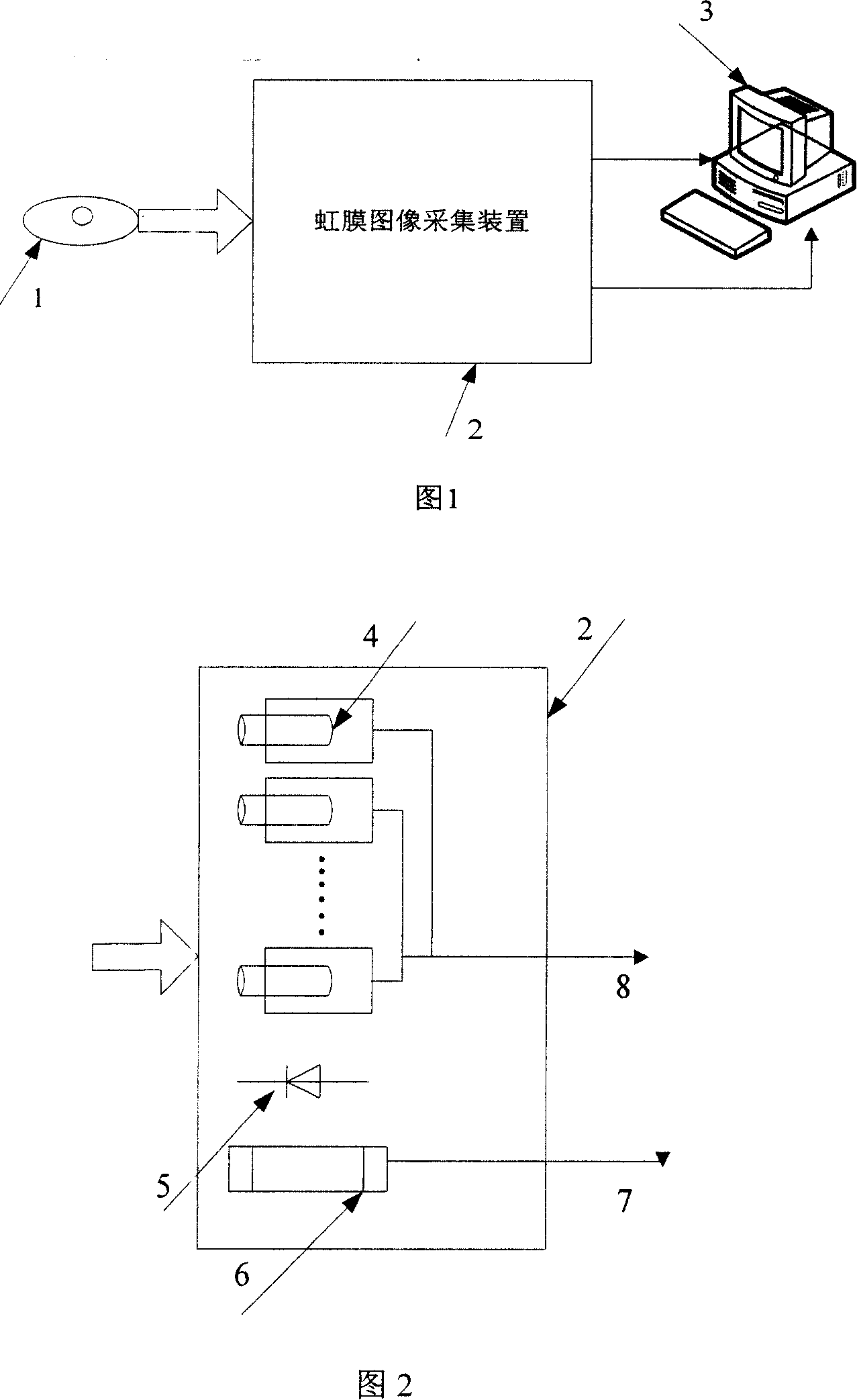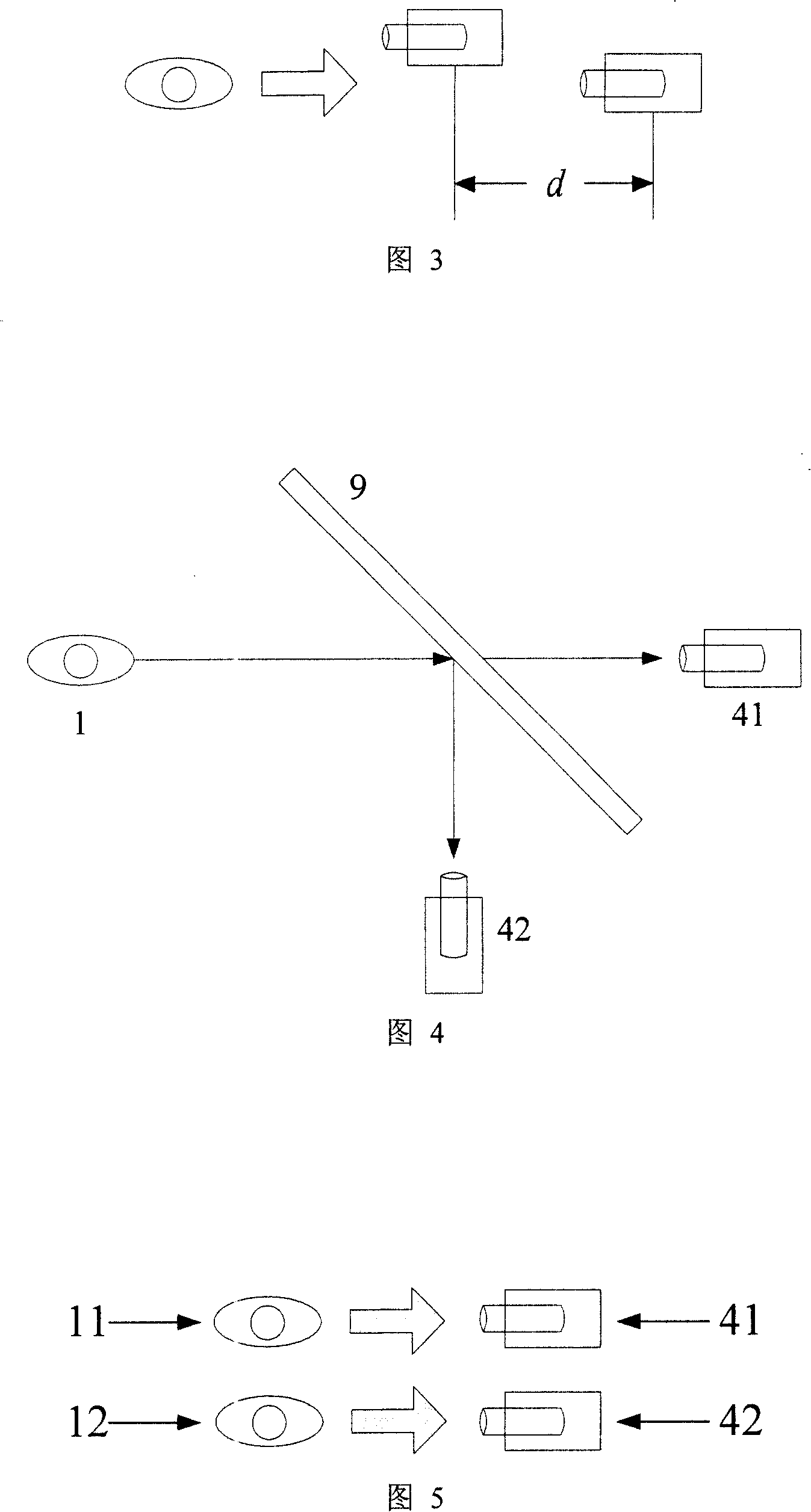Large field-depth iris image capturing system and method based on multiple cameras with fixed focus
An iris image and image acquisition technology, applied in the direction of instruments, character and pattern recognition, computer components, etc., can solve the problems of limited stability and service life, difficult iris recognition real-time requirements, slow zoom speed, etc., to achieve convenient signal processing, easy to fit segmentation and normalization, and fast focusing
- Summary
- Abstract
- Description
- Claims
- Application Information
AI Technical Summary
Problems solved by technology
Method used
Image
Examples
example 1
[0077] As shown in Fig. 3, the same focal length camera schematic diagram installed in different depth positions in the present invention:
[0078] Two identical fixed-focus cameras 4 are used, assuming that their imaging range is 20-30 cm. These cameras 4 are installed at different depth positions, and when their distance d is 10 centimeters, the overall imaging object distance range of the iris acquisition device 2 is 10 to 30 centimeters, and the overall effective imaging range of the system of the present invention is enlarged. Double (from 10 cm to 20 cm).
example 2
[0080] As shown in Fig. 4 fixed-focus cameras of different focal lengths in the present invention, the same iris is imaged by a beam splitter as shown in the structural diagram, and the symbols in the figure are represented as:
[0081] Iris 1 is eyes, beam splitter 9, fixed-focus camera 41 and fixed-focus camera 42 of different depths of field, wherein:
[0082] The fixed-focus camera 41 and the fixed-focus camera 42 adopt two completely different fixed-focus cameras, assuming that their imaging ranges are 10-20 cm and 20-30 cm respectively. Through the beam splitter 9, or half through the half-reflection film Beam Splitter, the reflected light of the monocular iris 1 is distributed to different fixed-focus camera imaging 41 and fixed-focus camera imaging 42, wherein half of the light enters the camera 42 by reflection, and the other half of the light Enter the camera 41 through the beam splitter. In this way, the overall imaging object distance range of the iris acquisition...
example 3
[0084] As shown in Figure 5, the fixed-focus cameras of different focal lengths in the present invention are shown in a structural schematic diagram of different irises respectively:
[0085] When multiple fixed-focus cameras 4 have different focusing distances, these cameras 4 can be installed at the same depth position, and different imaging object distance ranges can also be realized.
[0086] Two completely different fixed-focus cameras 41 and 42 are selected, assuming that their imaging ranges are 10-20 cm and 15-25 cm respectively. These cameras 41 and fixed-focus cameras 42 are installed at the same depth position to image the iris 1 , that is, the left eye 11 and the right eye 12 respectively.
[0087] When the distance between the left eye 11 and the right eye 12 and the fixed-focus camera 41 and the fixed-focus camera 42 is in the range of 10 to 15 centimeters, the system of the present invention outputs the iris image of the left eye 11 for identification.
[0088]...
PUM
 Login to View More
Login to View More Abstract
Description
Claims
Application Information
 Login to View More
Login to View More - R&D
- Intellectual Property
- Life Sciences
- Materials
- Tech Scout
- Unparalleled Data Quality
- Higher Quality Content
- 60% Fewer Hallucinations
Browse by: Latest US Patents, China's latest patents, Technical Efficacy Thesaurus, Application Domain, Technology Topic, Popular Technical Reports.
© 2025 PatSnap. All rights reserved.Legal|Privacy policy|Modern Slavery Act Transparency Statement|Sitemap|About US| Contact US: help@patsnap.com


